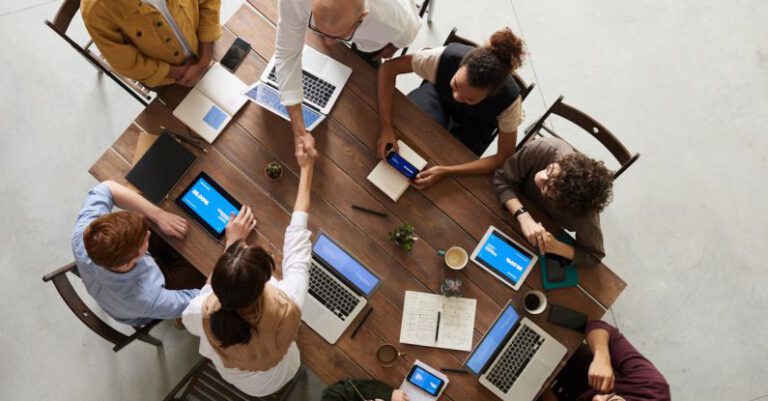How to Manage Distractions in a Digitally Connected World?
In a world where digital connectivity is ever-present, managing distractions has become a critical skill for maintaining focus and productivity. With constant notifications, emails, social media updates, and other digital stimuli vying for our attention, it can be challenging to stay on task and avoid getting sidetracked. However, by implementing some practical strategies and techniques, it is possible to navigate this digitally connected world more effectively and minimize distractions.
Understanding the Impact of Distractions
Distractions can be detrimental to our ability to concentrate and complete tasks efficiently. Research has shown that even brief interruptions can significantly disrupt our workflow and decrease overall productivity. In a digitally connected world where information is constantly at our fingertips, it is essential to recognize the impact that distractions can have on our focus and performance.
Identifying Common Digital Distractions
One of the first steps in managing distractions is to identify the common sources of digital interruptions in our daily lives. Some of the most prevalent distractions include social media notifications, emails, text messages, app alerts, and news updates. By becoming aware of these distractions, we can take proactive steps to minimize their impact and create a more focused work environment.
Setting Clear Boundaries
To effectively manage distractions, it is crucial to set clear boundaries around our digital devices and online activities. This may involve establishing designated times for checking emails and social media, turning off notifications during focused work sessions, or creating physical barriers to limit access to distracting websites or apps. By defining boundaries and sticking to them, we can create a more controlled digital environment that supports our productivity goals.
Practicing Mindfulness
Mindfulness can be a powerful tool for managing distractions in a digitally connected world. By cultivating awareness of our thoughts, emotions, and behaviors, we can better recognize when we are becoming distracted and take steps to refocus our attention. Mindfulness techniques such as deep breathing, meditation, and body scans can help us stay present and attentive, even in the face of digital distractions.
Utilizing Productivity Tools
There are a variety of productivity tools and apps available that can help us manage distractions and stay focused on our tasks. From time-tracking apps that monitor how we spend our time to website blockers that limit access to distracting sites, these tools can provide valuable support in our efforts to minimize digital interruptions. Experimenting with different tools and finding what works best for our individual needs can significantly enhance our productivity and focus.
Creating a Distraction-Free Workspace
Designing a distraction-free workspace is essential for maintaining focus and concentration in a digitally connected world. This may involve organizing our physical environment to minimize clutter and distractions, setting up a designated work area that is free from digital devices, or using noise-canceling headphones to block out external distractions. By creating a workspace that supports our ability to concentrate, we can optimize our productivity and minimize the impact of digital interruptions.
Establishing Daily Routines
Consistency and routine can be powerful antidotes to distractions in a digitally connected world. By establishing daily habits and routines that prioritize focused work time, breaks, and self-care activities, we can create a structured framework that supports our productivity goals. Setting aside specific blocks of time for deep work, leisure activities, and digital detoxes can help us maintain balance and avoid getting overwhelmed by the constant stream of information and stimuli.
Embracing the Power of Single-Tasking
In a world that glorifies multitasking, embracing the power of single-tasking can be a game-changer when it comes to managing distractions. By focusing on one task at a time and giving it our full attention, we can work more efficiently, produce higher-quality results, and reduce the likelihood of becoming distracted by competing priorities. Single-tasking allows us to immerse ourselves fully in the present moment and engage more deeply with our work, leading to greater satisfaction and productivity in the long run.
Taking Regular Breaks
While it may seem counterintuitive, taking regular breaks can actually help us manage distractions and maintain focus in a digitally connected world. By incorporating short breaks into our work routine, we can prevent burnout, replenish our mental energy, and avoid the cognitive overload that can lead to distractions. Whether it’s a quick walk outside, a few minutes of stretching, or a brief meditation session, giving ourselves permission to step away from our screens and recharge can significantly improve our ability to concentrate and stay on task.
Conclusion: Navigating the Digital Landscape
In a digitally connected world filled with constant distractions, managing our attention and focus has become a valuable skill for success. By understanding the impact of distractions, identifying common sources of interruption, setting clear boundaries, practicing mindfulness, utilizing productivity tools, creating a distraction-free workspace, establishing daily routines, embracing single-tasking, and taking regular breaks, we can navigate the digital landscape more effectively and maximize our productivity. By implementing these strategies and techniques, we can reclaim control over our attention, minimize distractions, and achieve our goals with greater focus and intention.






